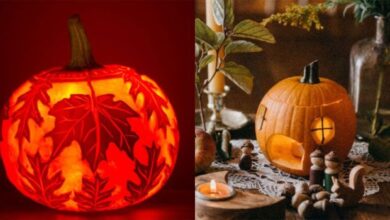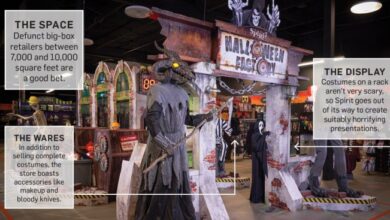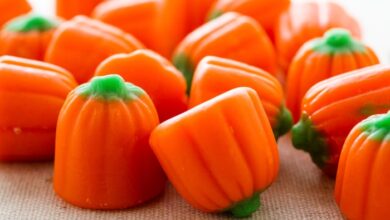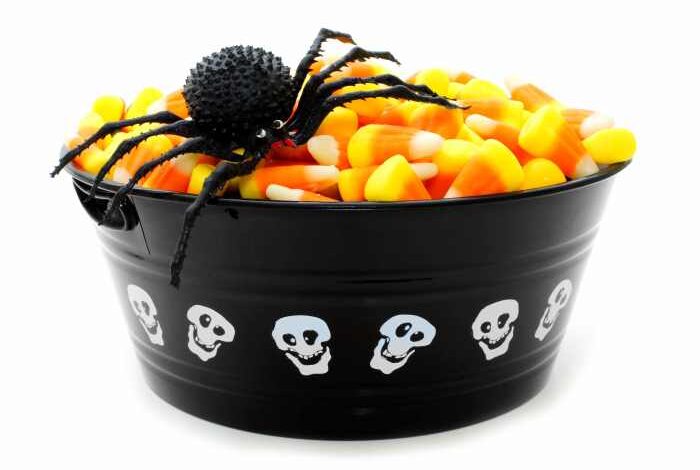
Candy Tricks or Treats: A Sweet History and Modern Appeal
Candy tricks or treats sets the stage for this enthralling narrative, offering readers a glimpse into a story that is rich in detail and brimming with originality from the outset. Halloween, a time of costumes, spooky decorations, and haunted houses, is also synonymous with candy.
But have you ever wondered how this sweet tradition came to be? From its ancient origins to its modern-day influence, candy has played a pivotal role in shaping Halloween celebrations worldwide.
This blog delves into the captivating history of candy and trick-or-treating, exploring its cultural significance, the psychology behind its appeal, and the ever-evolving trends in candy preferences. We’ll also touch upon the health and safety considerations surrounding candy consumption and delve into alternative treats and traditions that are gaining popularity.
Join me as we unravel the fascinating story of candy tricks or treats and its enduring impact on Halloween.
History of Candy and Trick-or-Treating
The tradition of trick-or-treating and the association with candy have evolved over centuries, intertwining with cultural and social changes. The origins of this practice can be traced back to ancient Celtic and European customs, which later blended with American traditions to form the Halloween we know today.
The Evolution of Candy as a Treat
The practice of giving treats, especially sweet ones, during festive occasions has a long history. In ancient Rome, the festival of Feralia, celebrated in late February, involved offering food and sweets to the spirits of the dead. Similarly, the Celtic festival of Samhain, which marked the end of the harvest season and the beginning of winter, included rituals involving offerings of food and drink to appease spirits.During the Middle Ages, the practice of “souling” emerged in Europe, where people, particularly children, would go door-to-door on All Souls’ Day (November 2) singing songs and prayers in exchange for “soul cakes,” small sweet breads that were believed to help the souls of the dead.
This practice later evolved into “guising,” where children would dress up in costumes and perform tricks or songs for treats, often in the form of food or money.In the 19th century, the practice of “trick-or-treating” began to take shape in the United States.
Children would dress up in costumes and go door-to-door, often saying “trick or treat” or “give us a treat or we’ll play a trick.” The treats given varied, but often included apples, nuts, and homemade treats. The practice became more widespread in the 20th century, with candy becoming the most common treat offered.
Origins of Trick-or-Treating
Trick-or-treating is believed to have originated from the ancient Celtic festival of Samhain, which was celebrated on October 31st. During this festival, the boundary between the worlds of the living and the dead was believed to be blurred. People would dress up in costumes and light bonfires to ward off evil spirits.The practice of “souling” in Europe, which involved children going door-to-door for treats, is also considered a precursor to trick-or-treating.
This practice, which emerged during the Middle Ages, was associated with All Souls’ Day, a Christian holiday that commemorates the dead.The practice of “guising,” which involved children dressing up in costumes and performing tricks or songs for treats, also contributed to the development of trick-or-treating.
Candy is always a hit for Halloween, but sometimes it’s fun to think outside the box. We’ve started a tradition of making our own nativity scene using recycled materials, which is a great way to teach the kids about the true meaning of Christmas.
You can find a fun and frugal tutorial for this activity at fun frugal family christmas tradition 2 nativity with a tutorial. It’s a great way to make Christmas more meaningful and memorable, and it’s also a fun way to get the kids involved in the holiday spirit.
We even make it a contest to see who can come up with the most creative candy treat for our nativity scene!
This practice was common in parts of Europe and was often associated with Halloween.
Historical Examples of Candy and Trick-or-Treating Traditions
- In the early 20th century, candy bars like Hershey’s Chocolate and Milky Way became popular treats for trick-or-treating. These treats were often given out in small bags or boxes, and were considered a more modern and commercially available alternative to homemade treats.
- During the Great Depression, homemade treats and fruit were more common, as families had to be more resourceful. Apples, nuts, and cookies were popular choices.
- After World War II, candy became increasingly popular as a treat for trick-or-treating, due to increased production and availability.
Cultural Significance of Candy in Halloween: Candy Tricks Or Treats
Candy has become an integral part of Halloween celebrations, shaping traditions and influencing cultural practices worldwide. Its association with the holiday is so deeply ingrained that it’s hard to imagine Halloween without the sweet treats.
Candy tricks or treats, a timeless tradition! Remember those childhood days, knocking on doors with a plastic pumpkin, hoping for a Snickers or a Twix? Now, I’m thinking about a different kind of treat, one that involves a special someone.
Will you go with me will you go with me on an adventure? Maybe we can even find some hidden candy treasures along the way. After all, who doesn’t love a good surprise, especially when it comes to candy?
Candy’s Role in Halloween Traditions
Candy’s association with Halloween can be traced back to ancient Celtic traditions, where people believed that spirits roamed the earth on Halloween. To appease these spirits, they would leave offerings of food and drink, including sweets. This practice evolved into the modern-day tradition of trick-or-treating, where children dress up in costumes and go door-to-door asking for candy.
Candy’s Cultural Variations in Halloween Celebrations
Candy’s role in Halloween celebrations varies across different cultures. Here are some examples:
- In the United States, candy is the most common treat given out on Halloween. Children collect bags full of candy, and many families host Halloween parties with candy as a centerpiece.
- In Mexico, Halloween is celebrated as Día de los Muertos (Day of the Dead). While candy is still a popular treat, traditional foods like sugar skulls and pan de muerto (bread of the dead) are also widely consumed.
- In Japan, Halloween is a relatively new celebration, but it has quickly gained popularity. Candy is a common treat, but costumes and parties are more prevalent than trick-or-treating.
Candy’s Influence on Halloween Consumerism
The popularity of candy on Halloween has fueled a significant increase in consumer spending. Candy manufacturers and retailers see Halloween as a prime opportunity to increase sales.
Candy tricks or treats always bring back memories of childhood. But sometimes, it’s nice to switch things up and give Dad something truly special. This Father’s Day, why not surprise him with a personalized experience? Check out some amazing fathers day idea s that are sure to make him feel appreciated.
After all, the best gifts are the ones that show you put thought and effort into them, just like the best candy tricks or treats.
The National Retail Federation estimates that Americans spend billions of dollars on Halloween candy each year.
This consumerism has also led to a rise in the popularity of Halloween-themed candy, such as special edition chocolate bars, gummies, and lollipops.
Alternative Treats and Traditions
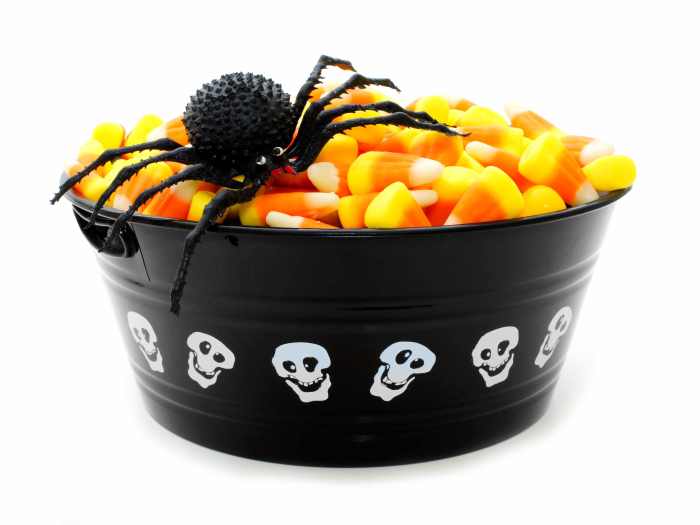
Halloween is a time for celebration and fun, but for many, it’s also synonymous with candy. However, there are many alternatives to traditional candy treats that can be just as enjoyable and exciting for trick-or-treaters. Additionally, Halloween traditions extend beyond candy, encompassing a range of activities and customs.
Alternative Treats, Candy tricks or treats
Alternative treats for trick-or-treating provide options for those with dietary restrictions, allergies, or simply a preference for something different.
- Small toys:These can be anything from bouncy balls and mini-cars to stickers and temporary tattoos. Toys offer a fun and engaging alternative for children.
- Non-candy snacks:Options like granola bars, fruit snacks, and popcorn balls provide healthy and tasty alternatives to sugary treats.
- Craft supplies:Providing small craft supplies like crayons, stickers, or playdough encourages creativity and allows children to engage in fun activities after trick-or-treating.
- Small books:Offering small books or comic books can encourage a love of reading and provide entertainment for children.
- Gift cards:Gift cards to local businesses like ice cream shops or toy stores provide a unique and personalized treat that can be used for future enjoyment.
Non-Candy Traditions
Beyond candy, many traditions enrich the celebration of Halloween.
- Pumpkin carving:This tradition involves carving pumpkins into various designs, often with spooky or humorous faces, and placing a candle inside. It’s a fun and creative activity for families and friends.
- Costume parties:Costume parties are a popular way to celebrate Halloween, with people dressing up in elaborate costumes and enjoying food, drinks, and music.
- Haunted houses:Haunted houses offer a thrilling and immersive experience, with actors and special effects creating a spooky and entertaining atmosphere.
- Bonfires:Bonfires are a traditional part of Halloween in some cultures, providing a warm and social gathering space for friends and family.
- Apple bobbing:This traditional game involves floating apples in a tub of water and trying to grab them with your teeth. It’s a fun and messy activity that brings people together.
Creative and Inclusive Halloween Activities
Halloween provides an opportunity for creative and inclusive activities that cater to diverse interests and abilities.
- Themed scavenger hunts:These can be tailored to different age groups and interests, with clues and puzzles leading to a final prize or treat.
- Halloween-themed movie nights:Gathering with friends and family to watch classic or modern Halloween movies provides a fun and engaging activity for all ages.
- Costume parades:Organizing a costume parade allows children to showcase their costumes and celebrate Halloween together.
- Spooky storytelling:Sharing spooky stories and legends around a campfire or in a dimly lit room can create a fun and eerie atmosphere.
- Volunteer opportunities:Participating in Halloween-themed volunteer activities, such as helping out at a local food bank or participating in a charity event, promotes community spirit and gives back to those in need.
The Economic Impact of Candy and Halloween
Halloween is more than just a spooky celebration; it’s a significant economic event that fuels various industries, especially the candy industry. The demand for sweets skyrockets during this time, generating substantial revenue for candy manufacturers, retailers, and businesses related to the holiday.
Candy Sales Surge During Halloween
The economic impact of Halloween is undeniable, with candy sales experiencing a substantial surge. The National Retail Federation (NRF) reports that Halloween spending in the United States reached an estimated $10.6 billion in 2022, with candy accounting for the largest share of spending.
The NRF also estimated that consumers spent an average of $101.74 on Halloween in 2022, with $29.55 of that being spent on candy. This surge in demand creates a lucrative market for candy manufacturers and retailers.

